The word “wow” might have been invented in anticipation of the .300 Weatherby Magnum. It’s that impressive. I’ve owned and fired a lot of different cartridges over the years, and the one that I find the most interesting, the most intimidating, and the most coolest ever is the .300 Weatherby. For a lot of years it was the most powerful .308-caliber cartridge on the planet. Roy Weatherby, my personal hero, created the cartridge in 1944 and it’s only been in the last few years that two or three more powerful .30-bore cartridges emerged, but these new .30-caliber cartridges are overkill. In fact, I could make a good argument that the .300 Weatherby is overkill. But I won’t. I love the round and I love the fact that it scares me a little every time I shoot it.
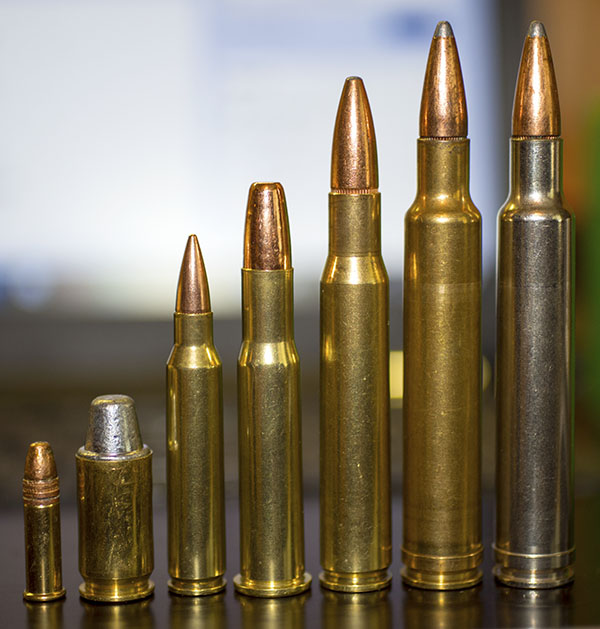
The first rifle I ever bought chambered for the .300 Weatherby, oddly enough, was not a Weatherby. It was a Winchester Model 70 that I bought maybe 35 years ago. It was a limited production item and that might have been a good reason to buy it, but the thing that grabbed my attention on this particular rifle was the walnut. You just don’t see factory Model 70s with fancy walnut, but this one had it in spades.


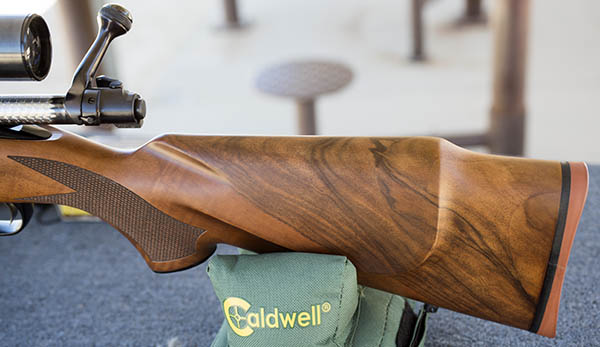
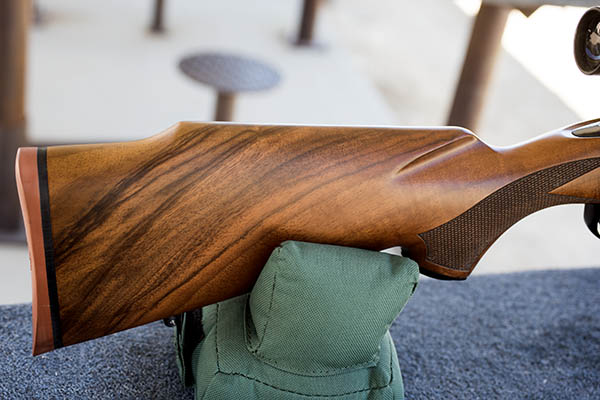
I think I paid just over $400 for that rifle back in the 1980s, which is what they were going for then. I had a Weaver T10 target scope I had used when shooting metallic silhouette and it went on the Model 70. It’s most definitely not the scope for a .300 Weatherby, but it’s what I had at the time. The scope is a collectible item all by itself…it’s steel and it was manufactured when Weaver made their scopes in El Paso.
So that’s the first rifle in this trio of .300s. The next is one I bought exactly 10 years ago, in 2009, at the height of the Great Recession. I was lucky in 2009…I was working, and lots of folks were selling things to raise cash, including more than a few gun stores. An outfit called Lock, Stock, and Barrel advertised a new-in-the-box Mark V Euromark on Gunbroker, and I was on that in a New York minute. The store was in the upper Midwest somewhere and they stated in their ad they would not sell to California (our state commissars make life difficult in a lot of ways, and more than a few sellers simply won’t ship to California). But I wanted that Euromark something fierce (the Euromark is a Mark V Weatherby with a satin oil finish, rather than the Mark V’s usual high gloss urethane finish). I called the guy, did my “woe is me” routine, and he agreed to ship the rifle to my FFL-holder here in the Peoples’ Republik.


I bought a new Weaver 4×16 scope, put it on the rifle, and then I put the Mark V in the safe. It stayed there for 10 years. I fired it for the first time this weekend, for this blog.
You know, the funny thing is my good buddy Marty saw the Weatherby before I put it in the safe and he decided he needed one, too. He tried calling Lock, Stock, and Barrel a week after I received mine, but they had already gone out of business. The Great Recession was rough. My grabbing that rifle was a lucky break.
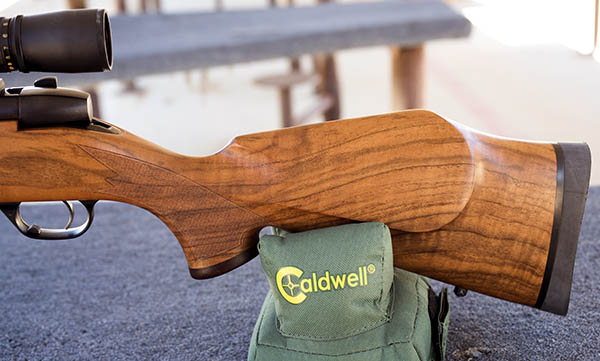
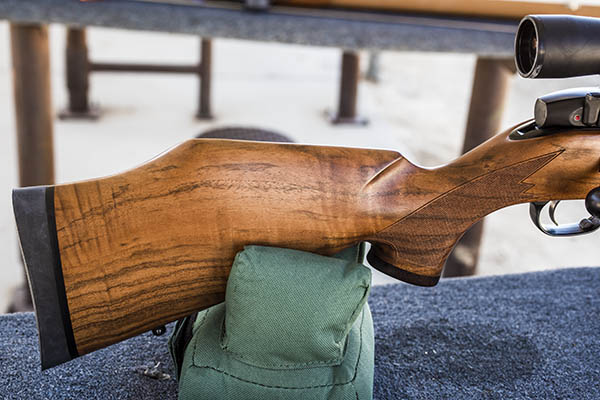
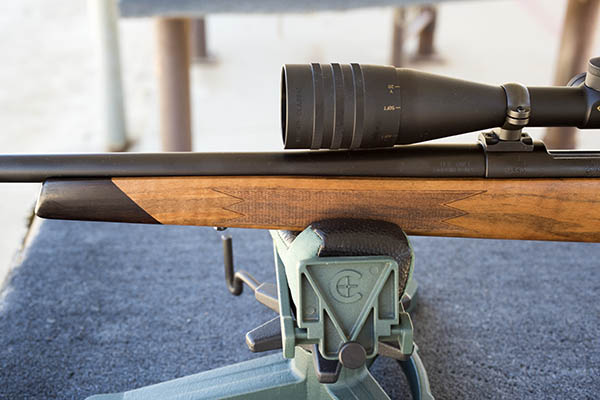
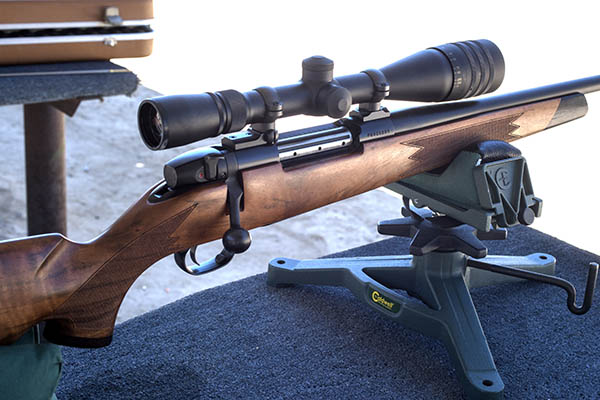
The last .300 Weatherby I’m going to talk about today is my Vanguard. It’s one of the original series Weatherby Vanguards, and it has what we tongue-in-cheek refer to as the Tupperware stock. I’ve written about this rifle on the ExNotes blog before. I wasn’t looking for a Vanguard when I bought this one, but I saw it at the Gunrunner gun shop in Duarte, the price was right, and, well, you know how these things go. It came home with me.
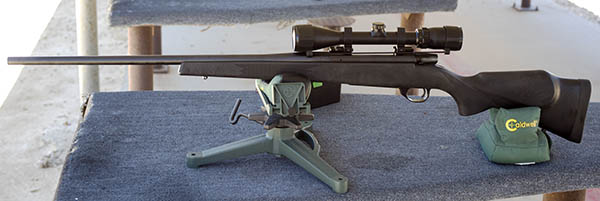
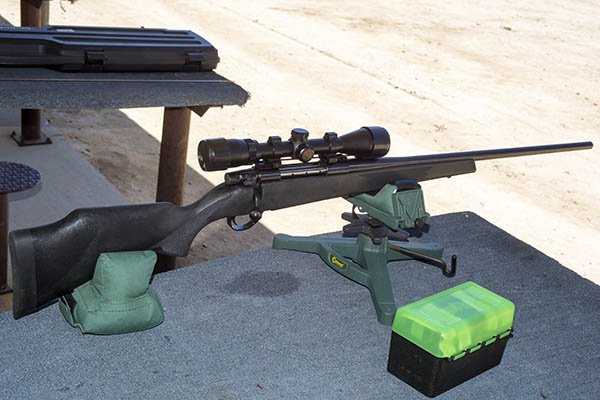
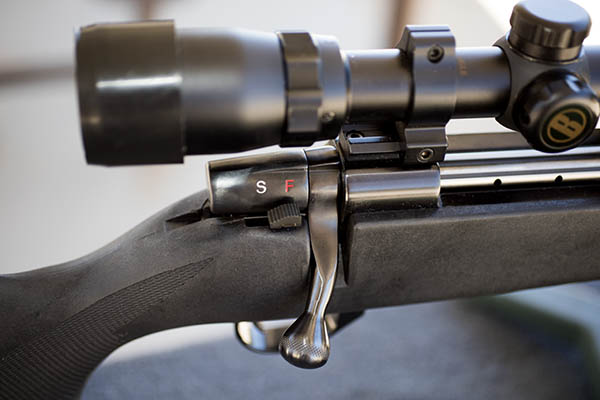
The deal on the Vanguard rifles is that Weatherby wanted to bring a lower cost rifle to market without cheapening their flagship Mark V, and they contracted with Howa of Japan to build the Vanguards. The principal difference is that the Vanguard has a 90-degree bolt lift compared to the Mark V’s 54-degree bolt lift, and the Mark V sells for about $1400 more than a Vanguard. I’m here to tell you that the Vanguard is an outstanding rifle, every bit as good as the Mark V, and in many cases, more accurate.
So how do these three puppies shoot?
Like I said at the beginning of this blog, the .300 Weatherby is intimidating. I like to think I’m not recoil sensitive, but the .300 Weatherby is right on the edge of what I think I can handle shooting from the bench. It’s not an easy rifle to shoot for accuracy. To get the best groups from any rifle, I like to minimize contact with the rifle. I let the rifle lay in the benchrest, lightly hold the fore end with my fingers, barely touch my cheek against the stock, move my head to an appropriate position to get a full image through the scope, and just touch the recoil pad with my shoulder. The idea is that I don’t want to exert any force on the rifle, as that can move the rounds around on the target, and I’m shooting for the tightest group. That works with rifles that have light to moderate recoil, say, up to the .30 06 level. Try that with a .300 Weatherby, though, and you’re going to get popped in the face by the scope when you drop the hammer. Really. Trust me on this; I know. Nope, when you shoot the .300 Weatherby from the bench, you need a solid grip on the rifle, and you need to pull it firmly into your shoulder. It’s a little harder to get tight groups doing that. But it’s easier than getting smacked by the scope.
Before I get into the accuracy results, I’ll share my impressions of the three rifles based on trigger pull, felt recoil, fit, and optics.
The Mark V has the best trigger. I broke cleanly at about 3 lbs, and it made shooting the rifle easier. I guess that’s to be expected with a rifle that has a price tag like the Mark V (these things ain’t cheap). The Model 70 had a crisp (no creep) trigger, but it was heavy. That made it a little harder to shoot well, especially when shooting it right after I shot the Mark V (I got spoiled; it’s pretty hard to follow the Mark V act). The Vanguard trigger had a bit of creep in it, and it was about as heavy as the Winchester’s trigger, which is to say both the Vanguard and the Winchester triggers were heavier than the Mark V’s trigger.
The Mark V is a clear winner from a felt recoil perspective. There are several reasons for this. One is that it is the heaviest of the three rifles, with its dense walnut stock and 26-inch barrel. Another is the Weatherby stock profile. Folks make fun of it, but it works. When the gun recoils, it draws away from your cheek, and the perception is that it has less recoil. Another factor is Mark V’s recoil pad. And the last one is the Weaver 4×16 scope’s eye relief. Head position isn’t critical, and you’re far enough back from the scope that it doesn’t hit you in recoil. Don’t get me wrong: The Mark V still packs a wallop. It’s just easier to shoot than the other two. The Winchester Model 70 was a close second, most likely because it also has a real stock (read: walnut), but it’s thinner recoil pad made it slightly more punishing than the Mark V. Third place from the felt recoil perspective was the Vanguard. It has a big recoil pad like the Mark V, but the plastic stock and 24-inch barrel make the gun lighter, and like we say in the engineering biz, f still equals ma. Also, the Vanguard’s low end Bushnell Banner scope does not have generous eye relief, and I got smacked a couple of times. Not enough to draw blood, but enough to get my attention.
I’ve already started talking about scopes, so let me continue that discussion. The Weaver 4×16 I purchased for the Mark V is a killer scope. It’s incredibly bright, crisp, and clear. In fact, it’s so good I didn’t realize I had it turned down to 4X for the first couple of groups I fired. Eye relief on this scope is generous enough for a bucking bronc like the .300 Weatherby. It’s the clear winner.
The Weaver T-10 on the Model 70 was out of its element. It’s a target scope. Eye relief was good enough, but alignment and distance were hypercritical; move just a little too far forward or backward, or left or right, and you’ve lost the image. I like the scope (I’ve owned it for over 40 years), but it’s in the wrong place on a hunting rifle.
The Vanguard’s Bushnell Banner…what can I say? Maybe this: Halitosis is better than no breath at all. I played around with the focus adjustment, but the Bushnell just isn’t as clear or crisp as either of the Weavers. That said, it’s considerably less expensive than the other two scopes. When I bought the Vanguard, it was essentially in as new condition, and the Bushnell was part of a factory package (it came with the rifle). If I was do it over, I’d get the Weaver 4×16, or maybe a Leupold, for this rifle. I may do that anyway. I know this is heresy, but I actually think the Weaver has a crisper image than a Leupold scope.
Of the three rifles, the Mark V fits me best, with the Vanguard a close second. I like the Weatherby profile. It just works for me. If I had to choose one of these three rifles for a hunting trip in the mountains (and I do, as I’m chasing deer with good buddy J later this year in Idaho), it would definitely be the Vanguard. It’s lighter, and that counts on a hunt like the one I’m headed into. Yeah, I know…a .300 Weatherby is a bit much for deer. You take what you want when you hunt. I’m taking my .300.
Okay, so the big question emerges: How about accuracy?
I almost didn’t include this. I did a bit of accuracy testing, but my advice is to take my results with a grain of salt. A big grain. Maybe a barrel of salt. I hadn’t been on the rifle range in a month or two, and firing 50 or 60 rounds of .300 Weatherby Magnum ammo in one sitting is not the best way to do this kind of shooting. Stated differently, I was not really giving these rifles a fair shake in this test. The first few groups you see below are me getting settled in, and the last few groups you see below are more likely than not me deteriorating after getting smacked around all morning. These rifles are better than what the results below indicate.
That said, here we go. All groups you see in the chart below were 3-shot groups at 100 yards from the bench. There was no wind, it was a bit warm, and conditions were about ideal.

I knew from past dealings that IMR 7828 propellant is good stuff in the big magnums, and I think that my 76.5 grain load with the 180-grain Remington jacketed softpoint bullet is a great load. I was a bit off on the first group I fired with this load (two shots were touching; the third was a flyer most likely induced by me) and then the other two groups with this load were at minute of angle. I could do better if I shot this rifle more (yeah, that’s another factor; this was the first time I had this rifle out and the barrel is not broken in yet). This is not a max load (I could go hotter) and the group size was smaller with the warmer of the two loads I tried with 7828 and the Remington 180-grain bullets. That suggests an even warmer charge of 7828 under this bullet is where greater accuracy lives, but I just don’t feel a need to go there. No animal on the planet would be able to tell the difference from an energy-on-target perspective and minute-of-angle accuracy is close enough for government work (especially for the game I plan to hunt). Dead is dead. There’s no sense getting beat up by more recoil to make an animal more dead.
The 80 grains of 7828 with the 165-grain Hornady bullet I show in the table above is near a max load, and I think it’s obvious I was losing my edge toward the end of this range session. I shot a 0.507-inch group at 100 yards with that same load in the Vanguard a couple of years ago; I just couldn’t duplicate it near the end of my range session this past weekend.
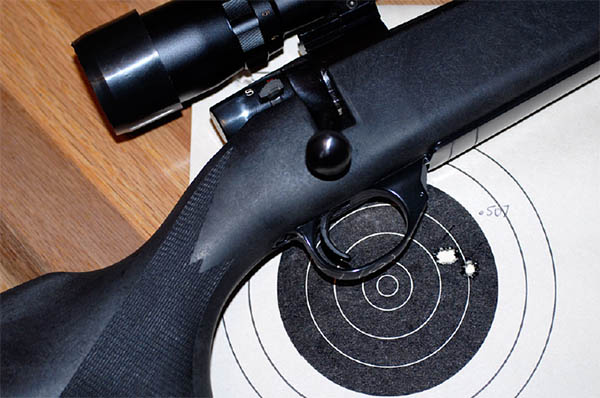
The difference between a cup of coffee and my advice is you might have asked for a cup of coffee, but I’ll give you my advice anyway. If I was going to get one rifle in .300 Weatherby, I’d get the basic model Vanguard with a walnut stock, and I’d put either a Weaver 4×16 or a Leupold scope on it. You’d be getting the Vanguard’s accuracy, with the walnut stock you’d get a little added weight to soak up the recoil, and you’d save a cool $1400 over the Mark V. I think the Weatherby Vanguard is the best rifle value on the market today. Shop around on Gunbroker.com for a bit and you can find new walnut Vanguards for about $600. That’s a phenomenal deal and owning a Weatherby will make you thinner, taller, and better looking. It will make you a better man. Trust me on this.
One last comment: The results you see above regarding different loads are my loads in my rifles. Your mileage may vary. Consult a load manual, and always work up your own loads starting at the low end of the manual’s recommended propellant charges.
More Tales of the Gun? No problem. Click here, and enjoy!
More Weatherby articles are here.
Never miss an ExNotes blog…sign up and rest easy!

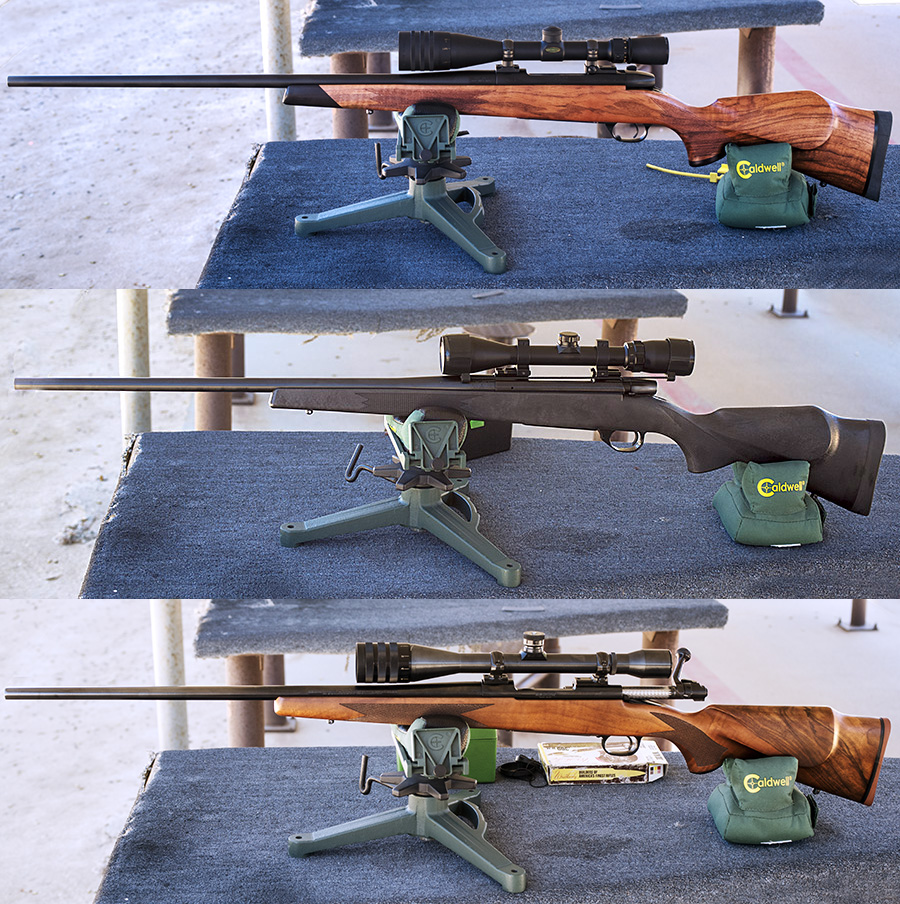
Fascinating